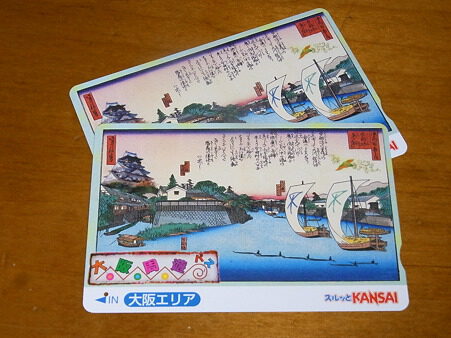Set out on a journey through Kyoto’s cultural gems with the ‘Kyoto Top Highlights Full-Day Trip From Osaka/Kyoto’. Discover UNESCO-listed temples and shrines, including the iconic Fushimi Inari Taisha shrine with its vibrant torii gates and the majestic Kiyomizu-dera temple boasting breathtaking views.
The elegant Kinkaku-ji temple adds a touch of splendor to the itinerary, promising an exploration of Kyoto’s architectural wonders. With the option to customize the trip and enjoy a Japanese-style lunch, visitors can tailor their experience.
This full-day excursion with an English-speaking guide offers a chance to uncover Kyoto’s timeless beauty and cultural depth, making it an unforgettable adventure.
Key Points
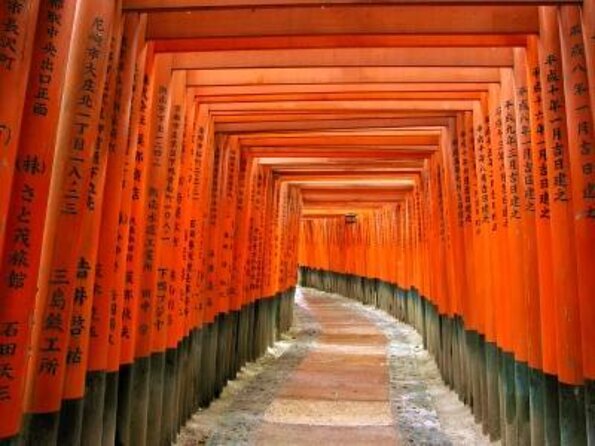
- Explore UNESCO-listed temples and shrines, including Fushimi Inari Taisha and Kinkaku-ji
- Admire stunning views from Kiyomizu-dera temple
- Customize your trip with optional Japanese style lunch
- Enjoy a well-organized tour with English-speaking guides and convenient transportation
UNESCO-listed Temples and Shrines
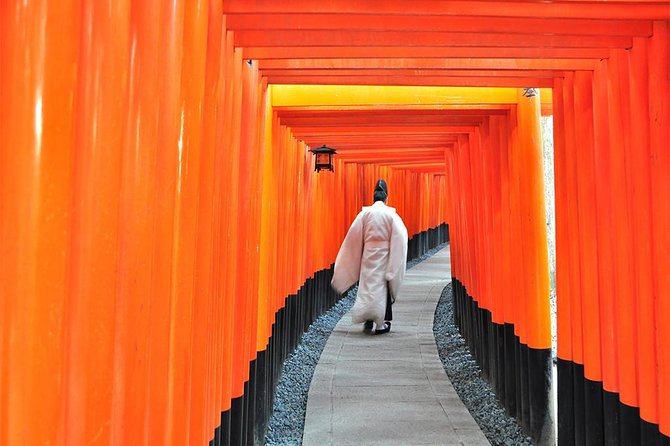
Discover the UNESCO-listed temples and shrines in Kyoto, enjoying centuries-old traditions and architectural wonders. These sites hold immense cultural significance and are architectural marvels that showcase Japan’s rich history.
One such temple is the Kiyomizu-dera, known for its wooden stage that offers breathtaking views of cherry blossoms in spring and vibrant foliage in autumn. Another highlight is the Kinkaku-ji, also known as the Golden Pavilion, a stunning structure covered in gold leaf that shimmers in the sunlight.
Visitors can marvel at the intricate designs and serene surroundings of these temples, gaining a deeper understanding of Japanese spirituality and craftsmanship. Kyoto’s UNESCO-listed sites aren’t just historical landmarks but living testaments to the country’s enduring traditions.
Fushimi Inari Taisha Shrine Visit
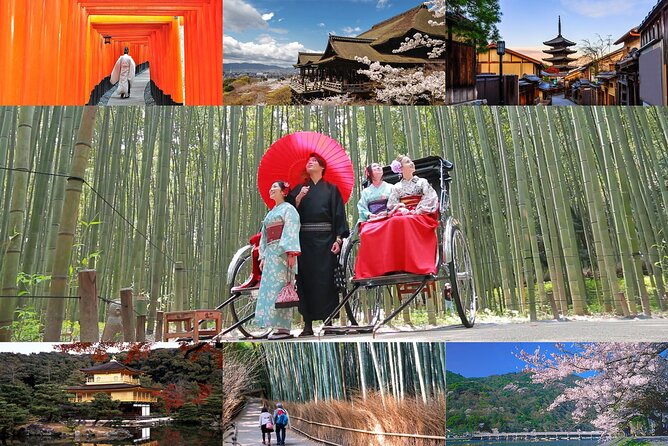
Nestled at the base of Mount Inari in Kyoto, the iconic Fushimi Inari Taisha Shrine beckons visitors with its thousands of vibrant torii gates, creating a mesmerizing pathway through the sacred grounds. The shrine’s architecture, characterized by its striking red color and intricate designs, reflects traditional Japanese aesthetics. Each torii gate holds symbolic significance, representing a transition from the mundane to the sacred. Visitors can enjoy the spiritual atmosphere, following the winding path up the mountain, passing under countless torii gates. The Fushimi Inari Taisha Shrine offers a unique experience, blending natural beauty with cultural heritage, making it a must-visit destination for those seeking a deeper understanding of Japanese traditions.
| Fushimi Inari Architecture | Torii Gate Symbolism |
|---|---|
| Striking red color | Transition to sacred |
| Intricate designs | Spiritual significance |
| Traditional aesthetics | Sacred path experience |
Views From Kiyomizu-Dera Temple
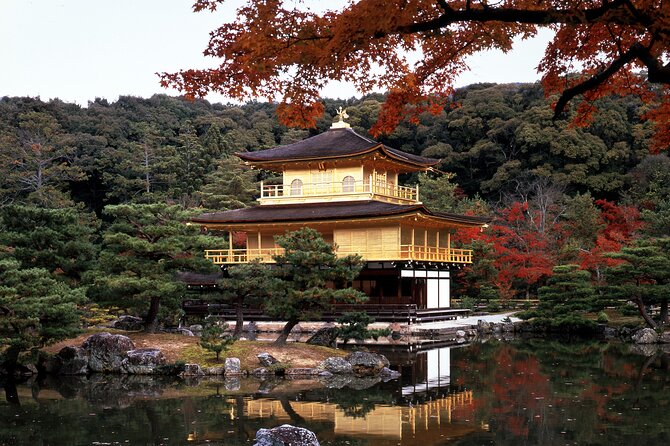
Offering panoramic views of Kyoto city and its surrounding landscapes, the Kiyomizu-Dera Temple stands as a mesmerizing vantage point atop a hill, providing visitors with a breathtaking perspective of the historical and natural wonders below.
The temple’s platform offers an ideal spot for sunset photography, allowing guests to capture the golden hues painting the city as the day comes to a close.
Beyond its scenic charm, Kiyomizu-Dera holds immense cultural significance, being a UNESCO World Heritage Site since 1994. Visitors can appreciate the temple’s architectural beauty and enjoy the rich history and traditions it embodies.
Whether admiring the stunning views or delving into its cultural importance, Kiyomizu-Dera Temple promises an unforgettable experience for all who visit.
Elegant Kinkaku-ji Temple Discovery
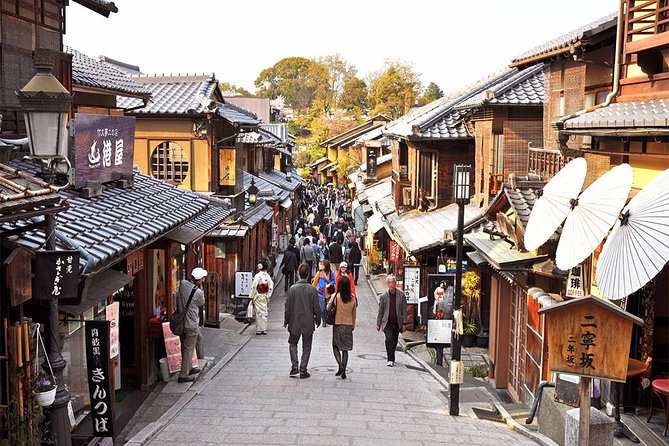
The elegant Kinkaku-ji Temple captivates visitors with its shimmering golden exterior reflecting on the tranquil waters that surround it, creating a scene of unparalleled beauty and serenity. This iconic temple, also known as the Golden Pavilion, holds a rich history dating back to the 14th century.
The exquisite architecture of Kinkaku-ji blends Zen Buddhist and Shinden styles, showcasing intricate details and symbolic design elements. Visitors can explore the carefully landscaped gardens surrounding the temple, adding to the peaceful ambiance of the site.
Don’t miss the opportunity to learn about the significance of each floor of the temple, symbolizing different architectural influences and spiritual meanings.
Optional Japanese Style Lunch Customization

While exploring the Kyoto Full-Day Trip, travelers have the opportunity to customize their experience by opting for a traditional Japanese style lunch. The optional Japanese style lunch allows visitors to delve deeper into the cultural influences of Kyoto through customized menus that showcase the region’s distinctive flavors and culinary traditions. Embracing the essence of Japanese cuisine, participants can savor a variety of dishes that highlight the local ingredients and cooking techniques. Below is a sneak peek into what travelers can expect from this optional culinary experience:
| Appetizers | Main Course | Desserts |
|---|---|---|
| Sushi assortments | Tempura selection | Matcha sweets |
| Miso soup | Grilled fish dishes | Wagashi |
| Edamame | Sukiyaki | Fresh fruit |
| Pickled vegetables | Yakitori skewers | Ice cream |
Common questions
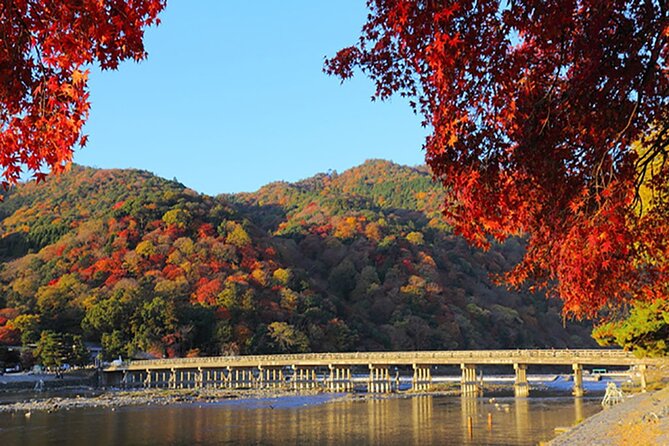
Are There Any Restrictions on Photography at the Temples and Shrines in Kyoto?
Photography etiquette in Kyoto’s temples and shrines emphasizes cultural sensitivity. Respect privacy concerns by refraining from capturing religious ceremonies. Tourists are advised to be mindful of their behavior, avoiding disruptive actions and maintaining the serene atmosphere.
How Early Should I Arrive at Fushimi Inari Taisha Shrine to Avoid the Crowds?
To avoid crowds at Fushimi Inari Taisha shrine, the best time to arrive is early morning before 9 AM. This allows for peaceful exploration and better photography opportunities without the hustle and bustle of peak hours.
Is There a Dress Code for Visiting Kiyomizu-Dera Temple?
When visiting Kiyomizu-dera Temple in Kyoto, there is no strict dress code, but it’s recommended to wear conservative attire out of respect. Visitors should remove their shoes before entering certain areas, following Japanese cultural norms and etiquette.
Can Visitors Enter the Kinkaku-Ji Temple or Is It Only for Viewing From the Outside?
Visitors can enter Kinkaku-ji Temple, experiencing its serene beauty up close. However, temple rules must be respected inside. As part of the tour, guests can explore its intricate details and reflective surroundings, seeing its historical significance.
How Far in Advance Should I Request a Vegetarian Meal for the Optional Japanese Style Lunch?
When requesting a vegetarian meal for the optional Japanese style lunch on the Full-Day Trip, travelers should do so at least 24 hours in advance. This ensures dietary needs are met while immersing in Japan’s rich culinary traditions.
Last Words

Set out on a journey through Kyoto’s cultural treasures with the ‘Kyoto Top Highlights Full-Day Trip’. From the vibrant torii gates of Fushimi Inari Taisha shrine to the majestic views at Kiyomizu-dera temple, each stop promises to enchant and inspire.
The elegant Kinkaku-ji temple adds a touch of splendor to the experience. With the option to customize and enjoy a Japanese-style lunch, this excursion offers a well-rounded exploration of Kyoto’s architectural wonders and cultural depth.
Don’t miss out on this captivating adventure!
